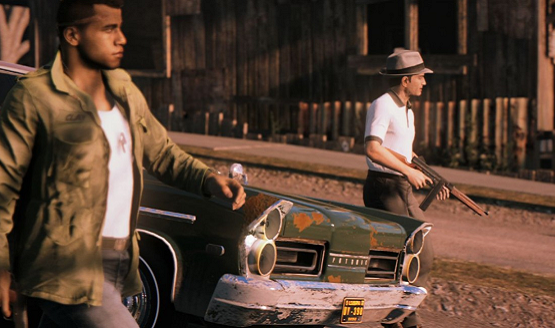
Succeeding in unfamiliar territory, “Mafia III” is a surprising gem of stellar cinematic storytelling only held back by repetitive gameplay mechanics and an open world that at times feels unrealistically empty.
The setting and premise for “Mafia III” is a relatively untapped part of history ripe with storytelling potential, and thus capitalizes on its uniqueness with exceptional results. The player takes on the role of “Lincoln Clay,” an African-American, Vietnam War veteran returning to “New Bourdeaux,” a fictional representation of New Orleans. Upon his return, Clay and a group of conspirators perform a bank heist for several million dollars to get rich while helping pay off his uncle’s debts with Sal Marcano and the Marcano crime family.
Clay is then swiftly betrayed, his uncle and his friends are killed and Clay swears to defeat Sal Marcano and all the members of his organization. Clay fights Sal Marcano’s mafia by annexing his territory in New Bourdeaux, culminating with the eventual face-off between Clay and Marcano. Clay has to coordinate with several other criminal leaders in New Bourdeaux to defeat the Marcano crime family. Clay’s story in New Bourdeaux is rife with racism and social commentary of the post-Vietnam War era, which creates a fulfilling subject matter that is both accurate and compelling.
“Mafia III” excels at encapsulating the player in its atmosphere. The score strikes a proper balance between licensed music from the late 1960s (such as Creedence Clearwater Revival or The Rolling Stones) and the original score. The cars are familiar designs reminiscent of the classic Mustangs and Chargers we see in antique car shows today. The fashion of civilians and characters match the classic 1970s hippie-chic and extravagant styles of the time. People also exhibited the specific mannerisms and spoke slang accurate to the 1960s, both appropriate and inappropriate.
Characters and storytelling are on the forefront of “Mafia III’s” prowess. With such a unique setting never before seen in video game storytelling, “Mafia III” takes the classic archetype of a revenge story and fleshes it out with various and complex caricatures from the late 1960s. In particular, these characters’ performances are incredibly well written and acted, in fact it is some of the best acting ever seen in a video game to date.
There are characters of all ethnicities representing all sorts of backgrounds and themes; one character could be an African-American member of the Black Panthers and the next could be a rich Italian man. These characters’ performances are fleshed out and the actors fully embrace these backgrounds, instilling a sense of realism in their portrayals.
The beginning of the story paves the way for a potentially immersive gameplay experience in “Mafia III,” but quickly gives way to heavy repetition of mundane tasks. As Clay fights back against Marcano, he initiates turf wars over several districts of New Bourdeaux. These missions are fun at first, but eventually missions are recycled assassination and sabotage missions that become a mundane set of tasks rather than exciting progressions. Not many new gameplay elements are introduced beyond the first few hours, exemplifying the grind factor of missions to the point where it feels like busy work without satisfaction.
“Mafia III” had the potential to be a truly wonderful video game; an amazing atmosphere, unique storytelling and exemplary acting. Unfortunately the gameplay setbacks are a significant let-down, resulting in an extraordinary game marred by the same missions over and over.

